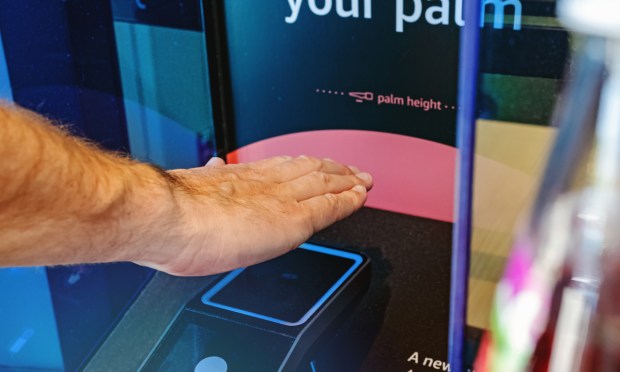Amazon’s Palm Payment System Aims to Challenge Apple and Google

Is Amazon’s palm payments method a serious challenger to Apple and Google?
Or is it a “solution in search of a problem?”
A report Friday (Aug. 11) by The Wall Street Journal (WSJ) examines those questions as Amazon prepares to launch its Amazon One palm scanning payment method at more than 500 Whole Foods locations across the U.S.
The program lets users pay by palm, and gives Amazon Prime members the ability to redeem deal account-linked savings.
The WSJ report argues that Amazon’s expansion of this biometric technology is an effort to compete with Google and Apple in the digital wallet space, as well as the tech giant’s “most ambitious” effort to become a full identity provider.
As for payments, the WSJ says, Amazon could face an uphill battle, as Apple has spent years building Apple Pay into a $2 billion business.
“From a payments point of view Amazon One feels like a solution in search of a problem,” Harshita Rawat, a senior analyst for payments at Bernstein, told the WSJ.
She said consumers already have a wealth of payment options, given the ubiquity of credit cards, digital wallets and the banking/communication infrastructure supporting them.
The report cites PYMNTS’ research from earlier this year showing that just under 2% of in-store payments are made using Apple Pay. Yet Amazon vice president and Amazon One lead, Dilip Kumar, said thinking about Amazon One just as a payment method is limiting.
“This is more about identity,” he said.
And research by PYMNTS shows that consumers are more satisfied when they can use their digital profiles, 85% of consumers reporting being very or extremely satisfied with merchants’ digital shopping features, compared to just 58% of those who did not use digital profiles.
“Moreover, the savings features can be key,” PYMNTS wrote last month as Amazon/Whole Foods debuted the palm payment program.
“The U.S. edition of the Index revealed that 39% of consumers considered coupon usage to be very or extremely important when choosing merchants, and an additional 3% cited this as the single most important concern when deciding where to make purchases.”
That means the ability to link Prime savings can be a major draw, considering the number of American consumers who engage with the subscription offering. Data from a PYMNTS survey of nearly 3,500 U.S. consumers found that, as of October 2022, 71% of consumers had access to an Amazon Prime subscription, compared to 66% the year before.
